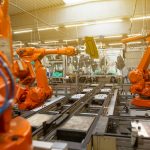The COVID-19 pandemic disrupted industries across the globe, and the automotive sector was no exception. From production halts and supply chain challenges to shifts in consumer behavior and the rise of new trends, the pandemic reshaped the automotive landscape in profound and lasting ways. As the world moves forward, the automotive industry continues to adapt to these changes, embracing new opportunities and addressing lingering challenges. Here’s an in-depth look at how COVID-19 transformed the automotive industry.
Impact on Manufacturing and Supply Chains
The pandemic exposed vulnerabilities in global supply chains, particularly in the automotive industry, which relies heavily on just-in-time manufacturing. As countries implemented lockdowns and travel restrictions, production facilities shut down or operated at reduced capacity. This led to delays in the manufacturing of vehicles and critical components, such as semiconductors and raw materials.
The semiconductor shortage, exacerbated by COVID-19, became a significant bottleneck for automakers. With chips in short supply, manufacturers were forced to scale back production, delay launches, and prioritize higher-margin vehicles. Even as demand for cars rebounded, the supply chain struggles persisted, highlighting the need for greater resilience and diversification in sourcing.
Shifts in Consumer Behavior
COVID-19 fundamentally altered consumer preferences and priorities, reshaping the way people think about transportation. As public health concerns grew, many individuals turned away from shared mobility solutions like ride-hailing and public transportation in favor of private vehicles. This shift drove increased demand for personal cars, particularly in urban and suburban areas.
At the same time, economic uncertainty and rising unemployment during the pandemic led many consumers to postpone large purchases or opt for used vehicles over new ones. This created a surge in demand for pre-owned cars, driving up their prices and boosting the used car market.
The Rise of Digital Transformation
The pandemic accelerated the adoption of digital technologies in the automotive industry, particularly in the way vehicles are bought and sold. With physical dealerships closed or operating under restrictions, automakers and dealers embraced online platforms to reach customers.
Virtual showrooms, digital financing options, and contactless delivery became standard features, making the car-buying process more accessible and convenient. Companies like Tesla, which already had a strong online presence, thrived in this environment, while traditional automakers quickly adapted to meet changing consumer expectations.
Even as restrictions eased, the preference for digital channels remained strong, signaling a permanent shift in how consumers shop for vehicles.
Increased Focus on Electric Vehicles (EVs)
COVID-19 also acted as a catalyst for the transition to electric vehicles (EVs). Governments worldwide introduced stimulus packages and incentives to boost economic recovery, many of which focused on sustainable initiatives. These programs included subsidies for EV purchases, investments in charging infrastructure, and stricter emissions regulations.
As a result, automakers doubled down on their EV strategies, accelerating the development and rollout of electric models. Companies like General Motors, Ford, and Volkswagen announced ambitious plans to transition to all-electric lineups, signaling a long-term commitment to sustainability.
Workforce and Production Changes
The pandemic forced automakers to rethink their workforce and production strategies. Remote work became the norm for many white-collar employees, including engineers, designers, and administrative staff. This shift not only ensured business continuity but also highlighted the feasibility of flexible work arrangements in the industry.
On the production floor, automakers implemented new health and safety protocols to protect workers, including social distancing, regular sanitization, and the use of personal protective equipment. These changes added complexity and cost to manufacturing operations but were essential for maintaining productivity.
Emergence of New Trends
COVID-19 spurred the rise of new trends that are likely to shape the future of the automotive industry. Subscription-based car ownership and shared mobility solutions tailored for individual use gained traction as consumers sought flexibility and affordability. Additionally, interest in connected and autonomous vehicles grew, as these technologies offered solutions to pandemic-related challenges, such as reducing human interaction and improving logistics.
Challenges and Lessons Learned
The pandemic highlighted the importance of adaptability and resilience in the automotive industry. Automakers learned to pivot quickly, whether by diversifying supply chains, adopting digital sales channels, or accelerating EV development. These lessons will continue to guide the industry as it navigates future disruptions and emerging opportunities.
However, challenges remain. Supply chain issues, particularly the semiconductor shortage, persist, and economic uncertainty continues to impact consumer spending. Automakers must also address environmental concerns and meet evolving regulatory requirements while managing the shift to new technologies.
A Changed Industry
COVID-19 reshaped the automotive industry in ways that will be felt for years to come. From production and supply chain dynamics to consumer preferences and technological advancements, the pandemic forced the sector to innovate and adapt.
While the challenges were significant, the industry emerged with new strategies, a greater emphasis on sustainability, and a commitment to meeting the evolving needs of consumers. As automakers continue to rebuild and innovate, the lessons of the pandemic will shape the future of mobility.













